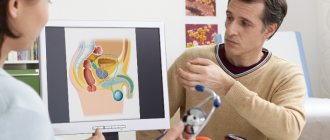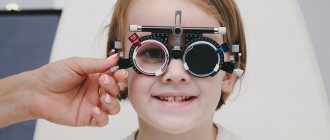Sometimes we experience a special kind of discomfort - it seems that either our head or our eyes hurt. This pain occurs in the sinus area or at the back of the eye. Sometimes it is pulsating, sometimes it is constant. This condition frightens us very much and we want to know what causes this pain? What can be done to alleviate it? Could there be something wrong with my vision?
Let's first answer the last question.
Scientists from the American Academy of Ophthalmology defined "eye pain" as "physical discomfort caused by an eye or other disease." But scientists emphasize that “the location of the pain does not necessarily indicate the cause of the pain.”
In most cases, the cause of a headache felt in the eyes may be hidden in a completely different place. We feel pain in this particular location because of a network of interconnected sensory nerves that penetrate all tissues of the body.
“Almost every pain-sensitive structure in the head transmits the sensation of pain to the eye area,” says Dr. Mark W. Green, MD, professor of neurology at the Icahn School of Medicine at Mount Sinai Hospital in New York City. “Just because the eye hurts does not mean that the problem is in the eye itself. In fact, this happens quite rarely."
Green advises to remember one useful rule: if the white part of the eye (sclera) is not red, and there are no complaints about vision - a blurred or distorted picture, it is very unlikely that the headache is associated with the eyes themselves.
Causes of eye pain
There are several serious diseases whose symptoms include pain inside the eye. Many of them require urgent treatment, so establishing the true cause of pain inside the eyes must occur quickly.
The main etiological factors that cause acute pain inside the eyeball are the following:
- Angle-closure glaucoma. The pathology is caused by a sharp increase in intraocular pressure due to improper circulation of ocular fluid. With this anomaly, pain can occur suddenly and increase at a high rate. In addition to pain in the eyeball, this condition is accompanied by visual disturbances - scotoma, rapid increase in myopia, changes in color vision, a feeling of strong pressure in the eyes, headache and nausea.
- An attack of ocular hypertension provoked by a violation of the circulation of the intraocular fluid. Increased pressure inside the eye worsens in the morning and can spontaneously subside in an upright position. In addition to discomfort, an increase in the vascular pattern on the conjunctiva is observed directly in the eye, and sometimes hemorrhage in the membrane of the eye.
- Increased intracranial pressure due to traumatic brain injury, hemorrhagic stroke, cerebral hematomas, meningitis and encephalitis, tumors and other pathologies. With this anomaly, patients complain of periodically increasing pain inside the eye. Symptoms increase when lying down, when coughing, sneezing, or other types of stress. Additionally, there is a slight decrease in visual acuity, which can progress with increased pain.
- Neuralgia of the trigeminal or supraorbital nerve. In such conditions, pain inside the eye is localized on one side and limited to the cheekbone, part of the nose with damage to the trigeminal nerve or the orbit of the eye, brow ridge and part of the forehead with supraorbital neuralgia. Additional symptoms are lacrimation on the affected side, increased pain when trigger points are irritated.
- Optic neuritis due to sinusitis, damage to the myelin sheath (sclerosis), inflammation of the orbit. The pathology is accompanied by pain inside the eyeball that intensifies when turning, a change in the perception of colors, a decrease in visual acuity and the appearance of spots in the visual field.
- Inflammation of the eyeball. The patient complains of acute constant pain inside the eye and increased body temperature. Visually visible swelling of the conjunctiva, redness of the eyelids, decreased vision on the affected side.
Pain syndrome inside the eye is also provoked by cluster headaches and migraines. Such anomalies are more common in women of fertile (childbearing) age. The pain in most cases is paroxysmal, intense, occurs suddenly, and lasts from several hours to several days. In addition to pain inside the eye, the condition is accompanied by lacrimation on the affected side, inflammation and redness of the cornea, general depression, attacks of irritability, intolerance to light, sounds, etc.
In isolated cases, behind the symptoms of inflammation of the eyeball, neuritis and neuralgia, glaucoma and other ophthalmological pathologies, another anomaly is hidden that is not related to the visual organs. Most often they are sinusitis, frontal sinusitis, gumboil, deep damage to the roots of teeth by caries.
Eye diseases leading to stabbing pain
Among the ophthalmological problems that can lead to the appearance of this symptom are:
- Angle-closure glaucoma (the pain is sharp and occurs suddenly);
- Open-angle glaucoma (pain is usually of moderate intensity);
- Astigmatism (especially if it is impossible to correct it);
- Blepharitis, accompanied by inflammation of the eyelids (this also causes a sensation of a foreign body in the eye);
- Conjunctivitis (accompanied by mild pain, as well as itching, purulent discharge);
- Barley (the intensity of the stabbing pain largely depends on the stage of the pathological process).
Diagnosis of pain inside the eye
To diagnose eye pain, a comprehensive ophthalmological examination is performed. Before it, instillation of analgesics is recommended, since pain leads to blepharospasm, which complicates examination. After this, visual and instrumental studies are carried out:
- visometry - measuring visual acuity using tables;
- non-contact tonometry - measurement to detect increased pressure inside the eyes;
- biomicroscopy - examination of the front side of the eyeball using a slit lamp, revealing corneal defects, inflammation and other pathologies;
- ophthalmoscopy - measurement of the transparency of the optical media of the eye and visual examination of the retina for pathologies;
- Ultrasound of the eyeball is a wave diagnostic method that helps diagnose developmental anomalies and defects of all eye structures;
- X-ray of the eye is a radiation diagnostic method that detects foreign bodies and defects of bone structures in the orbital area.
If a secondary nature of pain is suspected, general studies are carried out: blood and urine tests, tests for specific and nonspecific microflora, functional diagnostics.
Symptoms
The main symptom is pain in the eyes. Cutting is almost always accompanied by a whole range of symptoms, which includes:
- Vasodilation
- Redness of the mucous membrane
- Increased sensitivity to bright light
- Peeling skin around the eyes or on the eyelids
- Itching of varying intensity
- Increased lacrimation
- Discharge of pus along with tears
- Swelling of the skin around the eyes
- Pain and discomfort
- Deterioration of vision
By studying the symptoms, the doctor will be able to select appropriate diagnostic methods. The presence of pain with increased lacrimation indicates an allergic reaction or eye fatigue, the presence of an acute respiratory viral infection, or inflammation of the ciliary edges or conjunctiva.
You may need to consult a doctor of another specialty, for example, an allergist.
Pain with a feeling of sand in the eyes
If there is no dry eye syndrome, symptoms may indicate incorrectly selected contact optics. Sensations occur when there is insufficient supply of oxygen and nutrients to the surface of the cornea. Most modern models of contact lenses have high oxygen permeability. Therefore, problems with mucosal nutrition arise only when vision correctors are used incorrectly.
Stinging in the eyes and tearing
Symptoms are caused by a sudden change in temperature. A striking example is the increased production of tear fluid when a person enters a warm room from a cold street.
Watery eyes are provoked by severe frosts or hot weather, dry climates, and exposure to smoke. The development factor is prolonged exposure to direct sunlight on the retina. These are temporary and relatively harmless cramps.
Sometimes pain in the eyes and tearing is caused by a foreign body. Care must be taken to ensure that it leaves the mucous membrane as quickly as possible. In this case, the lacrimal glands begin to produce a larger volume of fluids, which help the body remove excess particles.
Which doctor will help with pain in the eyes?
The symptom is the responsibility of an ophthalmologist, who conducts an examination and selects diagnostic methods. He finds out why it hurts the eyes, determines the exact causes and treatment.
Treatment
The choice of treatment methods depends on the causes of unpleasant symptoms. Tactics can vary significantly in patients experiencing similar symptoms, but having a different list of pathologies.
See what treatment for eye pain is used for various diseases in the table below.
| Disease | Conservative therapy | Surgical/minimally invasive intervention |
| Glaucoma | Instillation of miotic drugs within the first 2 hours after admission to the hospital. Analgesics intramuscularly (diphenhydramine, promedol, aminazine). Intravenous administration of mannitol and glycerol to equalize IOP. | Iridectomy is a laser operation through which the doctor creates an opening between the anterior and posterior chambers of the eye to restore the circulation of intraocular fluid. |
| Ophthalmohypertension | Antihypertensive drugs: ● systemic diuretics; ● inhibitors of VGZ synthesis; ● beta-blockers. Additionally, combined analgesics are used. | Not required. |
| Increased intracranial pressure | Pressure control methods: ● taking diuretics; ● compliance with the drinking regime; ● diet; ● physiotherapy; ● manual therapy. | Shunting is the implantation of shunts (tubes) to drain excess fluid (CSF) from the skull. |
| Optic or trigeminal neuralgia | To relieve pain, a complex of anti-inflammatory, anticonvulsant, sedatives and antidepressants is used. Additionally, physiotherapy, acupuncture, and electrical stimulation are used. | Microsurgical intervention aimed at eliminating compression of nerves. |
| Optic neuritis | Prescribed drugs to eliminate the causes of neuritis: ● antibiotics for bacterial infections; ● antiviral agents for viral inflammation (herpes). Additionally, systemic anti-inflammatory drugs are prescribed, as well as glucocorticosteroids (administered retrobulbarly, that is, inside the eye). | Not applicable. |
| Inflammation of the eyeball | A course of antibiotics and anti-inflammatory drugs of systemic and local action is prescribed. To increase the effectiveness of treatment of inflammation of the eyeball, hormonal drugs are used - prednisolone, hydrocortisone. | Used only in the presence of abscesses. The intervention is carried out in an outpatient setting. The doctor opens the purulent cavity, washes it, and applies a bandage. |
| Cluster headaches and migraines | Therapy is aimed at eliminating headaches and restoring normal vascular tone. Ergotamines, triptans, prescription analgesics, anesthetics, and antiepileptic drugs are used. To improve the condition, physiotherapy and exercise therapy are used. | Not applicable. |
conclusions
Simple gymnastics, which should be performed regularly throughout the day, will help quickly relieve eye fatigue. But this is not enough! To make your eyes less strained and tired, it is important to provide the right conditions:
- Organize your workplace according to all the rules;
- Install a humidifier near your workplace;
- Use moisturizing drops throughout the day;
- During work, stop every 20-40 minutes to perform gymnastics;
- Turn down the brightness of your monitor and mobile gadget screens;
- Do not read in moving vehicles;
- Choose paper books or electronic ones using E-Ink technology;
- If possible, reduce your time working at the computer to 4 hours a day;
- 2 hours before bedtime, do not use mobile gadgets and computers;
- Get examined by an ophthalmologist at least once a year.
Remember that before performing gymnastics you need to consult an ophthalmologist! Moisturizing drops should also be selected by a specialist.
Prevention of eye pain
There are no specific uniform measures to prevent eye pain, since the causes of its occurrence are diverse. To reduce the risk of their occurrence, ophthalmologists advise regular follow-up with them, as well as with doctors of other specializations. The risk of abnormalities that provoke intraocular pain can be reduced by following the general principles of a healthy lifestyle, personal hygiene, and visual hygiene:
- periodically give your eyes rest;
- Use eye protection when working with chemicals, working in contaminated areas or in bright light;
- systematically perform eye exercises;
- use prescription glasses for working with documents and watching TV if you have visual impairments;
- monitor the light level when working with documents, etc.
Patients of any age should consult a doctor immediately after the first unpleasant symptoms appear. This will allow the ophthalmologist to detect the source of the malaise in time and eliminate the problem at an early stage.
Our services in ophthalmology
The administration of CELT JSC regularly updates the price list posted on the clinic’s website. However, in order to avoid possible misunderstandings, we ask you to clarify the cost of services by phone: +7
| Service name | Price in rubles |
| Pneumotonometry | 500 |
| Tonometry (according to Maklakov) | 1 000 |
| Goldmann tonometry (Icare tonometer) | 1 000 |
| MSCT of orbits | 7 000 |
All services
Make an appointment through the application or by calling +7 +7 We work every day:
- Monday—Friday: 8.00—20.00
- Saturday: 8.00–18.00
- Sunday is a day off
The nearest metro and MCC stations to the clinic:
- Highway of Enthusiasts or Perovo
- Partisan
- Enthusiast Highway
Driving directions









